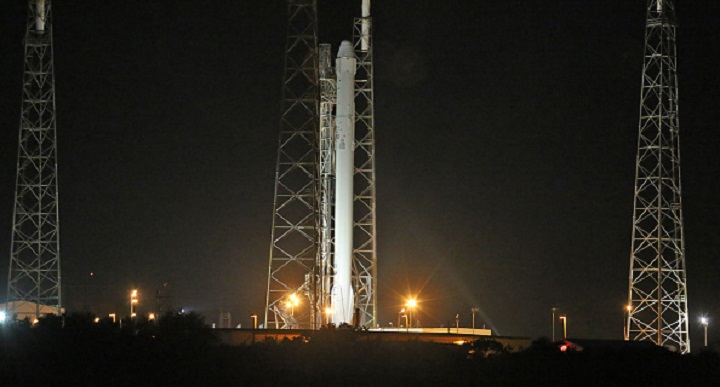KAMLOOPS, B.C. – Four British Columbia boys are hoping a third attempt will finally launch their elementary-school science experiment into space on Saturday aboard a rocket set to blast off from Cape Canaveral, Fla.

A technical failure on Tuesday failed to transport the experiment to the International Space Station. Last October, a NASA-contracted rocket left the ground in Virginia and exploded, leaving the students to duplicate their efforts.
“At least it didn’t blow up this time,” project co-ordinator Paul Hembling said of the aborted launch on Tuesday, when he was up at 3 a.m. to see the rocket go skyward.
Jordan Brown, Hunter Galbraith, Kieren O’Neill and Ryan Watson of Kamloops created the experiment in Grade 7, winning a district-wide contest to take part in the program.
It’s the only Canadian experiment to be chosen by the National Center for Earth and Space Station Education from among 17 other student projects set to go into space.
Hembling, principal at Bert Edwards Science and Technology School, said Saturday’s attempt will happen at 1:45 a.m. PT, with next Tuesday scheduled as a backup launch day if necessary.
There have been several other pre-launch delays since the four students, now at Sa-Hali Secondary, completed their task.
Hembling said some of the initial excitement has started to lose its glow, but the delays are part of the many lessons the students have learned along the way.
“It has now been almost a year since these boys — then in Grade 7, now almost halfway through Grade 8 — designed their experiment, so I think they all share a feeling of, ‘Let’s get on with this already,’ as do we all,” he said.
“Although the explosion was very exciting and gathered us much international attention, the reason we have put so much time and energy into this is not to keep watching it attempt to launch.”
Working alongside the boys and their teacher was Thompson Rivers University chemistry Prof. Sharon Brewer who, along with dean of science Tom Dickinson, provided the group with a lab to work on their experiment.
The students designed it to examine how the zero-gravity environment of space affects the growth of crystals.
They were intrigued with the chemical reactions that turn two liquids into a solid and designed their experiment around that.
Along the way, the boys discovered that liquids became a fluffy snowflake-like solid if they came together quickly, but more needlelike if a filter was added to slow the chemical process.
It’s essential that the launch happen at an exact time, Hembling said.
“It is something like firing a cannon at a moving target — the target being the International Space Station,” he said.
“If you don’t launch at the correct specific time, but instead two or five minute later, you end up missing and the berthing (docking) process cannot happen.
“If the launch on Saturday morning is successful, the rocket will berth with the space station on Jan. 10 and unberth on Feb. 7.” (Kamloops This Week)



Comments